Direct Digital Manufacturing: A Technology Whose Time Has Come
3D printing, a technology that has been in use for several decades, is part of a broader movement known as direct digital manufacturing (DDM) that could forever change the way we make things.
We're not quite at the stage envisioned by Star Trek: The Next Generation where a replicator on board the star ship can create any kind of inanimate matter, including food (but not, of course, antimatter, dilithium or latinum). But we're getting closer.
Even a cursory glance around the Web yields an amazing variety of products and projects being produced by additive manufacturing techniques ranging from straight ahead 3D printing to fused deposition modeling (FDM) and laser sintering.
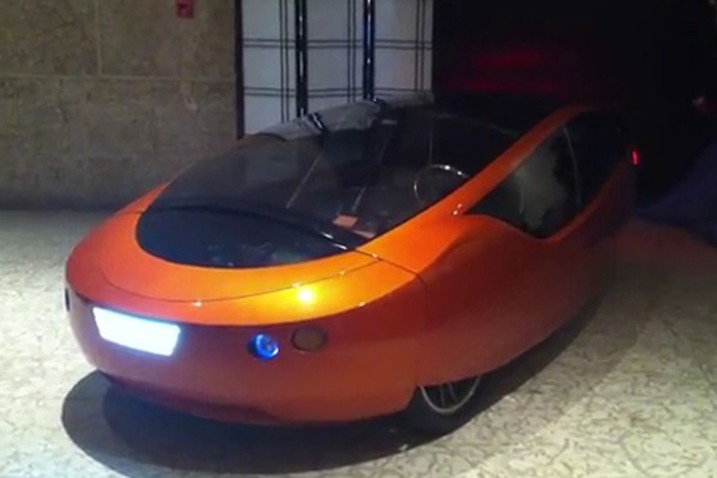 For example, consider the Urbee automobile which was featured in a recent Digital Manufacturing Report posting. This cute little car, a two-seater, hybrid electric/ethanol vehicle capable of 200 mpg on the highway, is the first automobile to have its entire body printed using Statasys FDM technology and a tough plastic known as ABS (acrylonitrile butadiene styrene). Traditional manufacturing methods, which involve making molds and shaping the parts out of fiberglass, would have been a laborious and expensive process stretching out over eight to 10 months. With FDM, several major body panels for the first prototype were built in weeks. Other parts were produced in days.
For example, consider the Urbee automobile which was featured in a recent Digital Manufacturing Report posting. This cute little car, a two-seater, hybrid electric/ethanol vehicle capable of 200 mpg on the highway, is the first automobile to have its entire body printed using Statasys FDM technology and a tough plastic known as ABS (acrylonitrile butadiene styrene). Traditional manufacturing methods, which involve making molds and shaping the parts out of fiberglass, would have been a laborious and expensive process stretching out over eight to 10 months. With FDM, several major body panels for the first prototype were built in weeks. Other parts were produced in days.
The complex geometries that can be created using these DDM processes are nothing short of amazing. A ribbon-cutting ceremony at the Philadelphia Navy Yard earlier this year was the occasion for the presentation of a detailed model of the historic Navy frigate, the USS United States, to one of the Naval dignitaries on hand to commemorate the occasion. The replica, complete with billowing sails, tiny gun ports, and Old Glory flying proudly from its stern, was manufactured at Paramount Industries using 3D digital scanning and selective laser sintering.
 And speaking of models, laser sintering also figures in the creation of highly detailed and accurate miniature models for collectors, wargamers and role players (a subculture you may not be aware of that demands absolute fidelity to the model's counterpart in the real world). In addition, laser sintering allows RPG Manufacturing to make large production runs without any deterioration of quality or detailing. And by simply tweaking the CAD data, the company can adjust the model's scale.
And speaking of models, laser sintering also figures in the creation of highly detailed and accurate miniature models for collectors, wargamers and role players (a subculture you may not be aware of that demands absolute fidelity to the model's counterpart in the real world). In addition, laser sintering allows RPG Manufacturing to make large production runs without any deterioration of quality or detailing. And by simply tweaking the CAD data, the company can adjust the model's scale.
Gamers find that the surface finish of the plastic is ideal for painting authentic details as you can see in the tank models illustrated here.
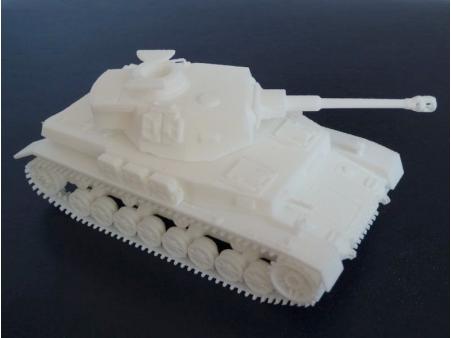
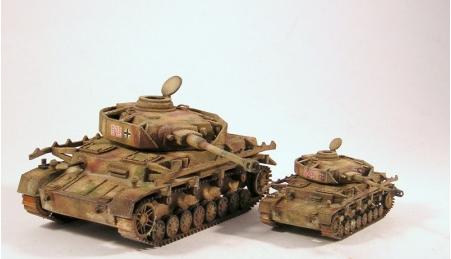
From the miniature world of models, let's move decisively into the macro world — printing entire buildings. For example, an entrepreneurial academic by the name of Behrokh Khoshnevis and his team at the University of 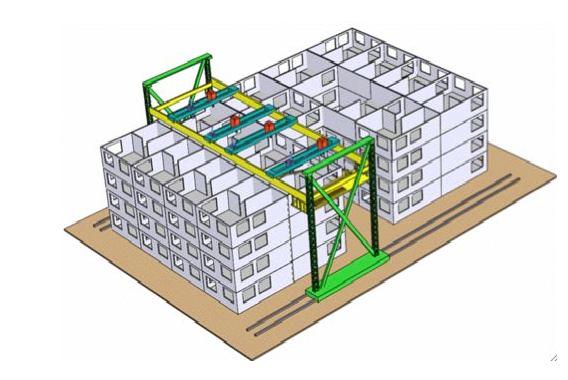 Southern California are working on developing a "counter crafting" concrete-making 3D printing machine that will be able to construct an entire building in hours. Using concrete, clay or adobe, Counter Crafting has already built a six-foot concrete wall from CAD drawings. The machine prints layer after layer of concrete that is smoothed during the process using a variety of trowel attachments.
Southern California are working on developing a "counter crafting" concrete-making 3D printing machine that will be able to construct an entire building in hours. Using concrete, clay or adobe, Counter Crafting has already built a six-foot concrete wall from CAD drawings. The machine prints layer after layer of concrete that is smoothed during the process using a variety of trowel attachments.
According to recent article in The Register, the USC group's grand vision "is to develop the science and engineering needed for rapid automated fabrication of objects of various size up to mega-scale structures such as boats, industrial objects, public art and whole building structures." The team believes it will be feasible to erect a 2,000-square foot, two-storey house in one day for about a fifth of the cost incurred using conventional methods. This includes fitting in the plumbing and electrical systems, handling the plastering, and perhaps including structural members. Their enthusiasm has had concrete results (sorry), convincing manufacturing giant Caterpillar to fund their efforts. And NASA is interested in their research in order to build bases on the Moon or Mars. This is indeed disruptive technology that's literally out of this world.
But direct digital manufacturing isn't limited to printing large and small objects. After all, the original 3D printing prototype, the Star Trek replicator, got it's start printing food for those explorers who boldly went where no man (and a few women) had gone before.
At the Cornell Creative Machines Lab, researchers are using a 3D printing technology known as Solid Freeform Fabrication to create culinary delights. Still in its early stages, the project is seeking to "make its mark on the culinary realm by transforming the way we produce and experience food." At the University of Exeter, researchers are already printing one of the most delectable of foodstuffs — chocolate. It's a tricky process, but already companies in the restaurant and food preparation industry are interested.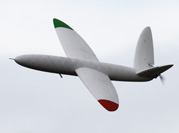
Other 3D printing processes are creating artificial blood cells and not too long ago, the world's first 3D printed plane. A drone, also knows as an unmanned aerial vehicle (UAV), was created and flown in less than a week by a British design team.
The Quiet Revolution
Someone who knows about UAVs as well as full-sized aircraft is Jeff DeGrange, the vice president of new business development for Stratasys. Before coming to Stratasys, DeGrange was with Boeing for 20 years —  the last ten years of his tenure with the big aircraft manufacturer was spent leading its additive manufacturing organization.
the last ten years of his tenure with the big aircraft manufacturer was spent leading its additive manufacturing organization.
"Additive manufacturing is the new best practice today and the future for unmanned air systems," he claims. Instead of placing orders for, say, a thousand units, the military will order up 100 and then, using rapid prototyping and additive manufacturing, will quickly evolve new models to meet changing requirements.
Direct digital manufacturing really comes into its own in military and commercial applications. Planes, trains, automobiles and other vehicles are often in service for 10 to 20 years, generating a spare parts support community that will use 3D printing and other additive manufacturing techniques to address spare parts and obsolescence issues. Even parts that were designed on Mylar 20 years ago can be reversed engineered into the CAD world and created by DDM.
Conventional manufacturing techniques, such as injection and pressure molding are very effective for production runs involving thousands of pieces. Additive processes such as FDM and laser sintering are better at creating complex shapes and geometries at lower but highly cost effective yields. DeGrange predicts that as additive manufacturing evolves and the cost of materials continues to drop, DDM's price curve will shift to fall more in line with conventional technologies.
Another major factor driving DDM is a cultural shift. "I think we are in a world today where the standard is ‘on demand,'" he continues. Our cell phones, tablets and entertainment systems, all reflect this "gotta have it now" mentality that will only become more intense as younger generations move into the spotlight. "They will pull the technology," he says.
Global competition is also adding impetus to the growing adoption of DDM. Today's demanding worldwide economy has the effect of compressing product development schedules including dramatically shortening time-to-market. Techniques such as rapid prototyping using additive manufacturing will be leveraged by an increasing number of industries as they learn how to use the technology and understand its advantages.
Additive technology, as compared to subtractive processes like machining, also address global efforts to reduce industry's carbon footprint. Subtractive techniques generate more waste material, eat up kilowatt hours, and require more handling, including the transportation of the raw stock. Says DeGrange, "Imagine sometime in the future walking into Home Depot for a plastic elbow to repair your sink. Instead of having an extensive inventory on hand, they have a machine in the store that prints just what you need."
In the excellent article, "A Strategist's Guide to Digital Fabrication," published in a recent issue of strategy+business, authors Tom Igoe and Catarina Mota write, "In the long term, many aspects of today's conventional supply chain are likely to change. But even in the next few years, digital fabrication technology — and the way it is used — will pose new and unusual challenges for conventional manufacturers, both large and small. It also represents enormous opportunities for brand building, cost saving, consumer outreach, innovation, and global competitiveness: in short, for a manufacturing business model that no longer depends only on economies of scale."
Given the ramp up of activity in the field and the rapid spread of new applications, it's safe to say that direct digital manufacturing is a technology whose time has come.










